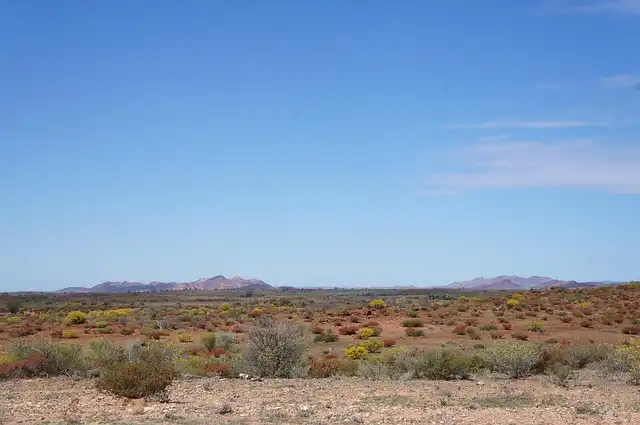Yilkari: Desert Journeys, Aboriginal Voices & Hidden Truths

Yilkari explores journeys into the Australian desert, revealing Aboriginal perspectives, hidden landscapes, and the search for deeper truths. The narrator connects with the land, its people, and its mysteries.
Mikey’s tape soon generates other noises: Madame Mao’s voice, a 60s songs clip from California, Timothy Leary talking about LSD. To the storyteller this is suitably “acausal”, like their trip, yet Mikey prefers “diagonal”. “There’s a type of argument included”, he gnomically assures the narrator.
Mikey’s Diagonal Interpretation
constantly seeking what’s behind the landscape. What’s hidden there. Its secret rhythms. The patterns that it holds, its music, that thread of noise virtually as well pale to hear. That’s what he seeks. He intends to catch it. Locate words for it. Translate it, also. As if you could.
The narrator disperses this yet does not demur. Soon they reach a “site” that Dylan– a guy of Aboriginal custom– has attempted them to experience. They really feel horror, and Galvin speculates that this is what Dylan planned: an advising to the narrator. “So you could see that the desert’s depths aren’t indicated for you.”.
Dylan’s Desert Warning
The storyteller is with Johnson, an art professional photographer that obtains his subjects by “wandering around” the Pilbara’s mines and loading terminals. Since Johnson has actually checked out H.P. Lovecraft’s The Darkness Out Of Time, they drive eastern to Lake Dissatisfaction (Kumpupintil).
Arriving at Kumpupintil, the narrator and Johnson sign up with camp with three experts of The second world war that clarify their double goal: to honour Len Beadell by using his roads and to reach Corunna Downs Landing strip, the secret base of bombing raids on the Dutch East Indies by B24 bombing planes. (It is now a ruin, and Johnson had actually once photographed it.).
To experience their existence, Yilkari’s characters discover, is to obtain intimations of one’s own fatality. To know and accept the desert’s grim greatness is the basis of a cosmology that, in these 4 tales, belongs only to Aboriginal individuals and to misfits who have cleaved to them.
The storyteller suggests to Valentin that in the western desert he might regain freedom to be his real self. To the narrator’s shock, Valentin and Mr Giles make music together. The storyteller’s connection with Narulya permits him 2 settings in these tales. The Gulf country is unique to the storyteller since his daddy took him there as a child of 8 or 9, visiting deserted goldfields where the narrator’s grandpa had tried his good luck. In its closing web pages, the storyteller is with Narulya at a desert area where vocal singing can be faintly listened to, though the singers can not be seen.
The Narrator’s Two Settings
The Gulf nation is unique to the narrator since his dad took him there as a youngster of eight or nine, checking out abandoned goldfields where the narrator’s grandpa had tried his good luck. The factor of having youngsters, his daddy says, is “to maintain your memory”. As a grown-up, the storyteller goes back to these locations with his friend Mikey. Mikey’s lorry has a soundtrack: he plays ambient music “since it never provides you the sense of a beginning or an end.”.
As a novitiate of Nation, the narrator has the ability to intervene in a description of the word yilkari. To the interested newcomer (Valentin) the Aboriginal guy (Mr. Giles) begins a description of that term by indicating the skies– that is, as something we can see.
Country and The Word Yilkari
Working livestock’s not an ability, it’s an art, like playing a tool, improvisating. You’re like a pianist in an auditorium. Or a conductor with an orchestra. You could have a rating to comply with, but you require to be constantly viewing, shifting, changing every little thing in mid-flow. The livestock are the notes of music. You need to provide best form. When you can do that, I’ll claim you’re ready, and I’ll send you out.
To the narrator’s shock, Valentin and Mr Giles make songs together. The story finishes with Valentin’s expression of wonder: “What comes currently?
As a historian of Central Australia’s colonisation and some time private investigator of some of its human issues, I was aware of myself acknowledging to the authors their preoccupation with questions much more transcendental. Is one human life little or big?
While civilisation’s unconfident acquisition on Australia’s deserts enables “liberty” to the “drifter”– 2 vital words in this publication– these sparsely populated areas personify the ineffable, ruthless and effective spirits of all that have dwelt there over countless years.
Hearing the Country’s Song
Yet if you pay attention, out in the desert, I imply actually pay attention, pay attention hard, in some cases you can virtually listen to the country singing them. Hear through the silence. And we may listen to that music, where we’re going, where the old desert travellers were, those nomads.
The narrator’s link with Narulya permits him two placements in these stories. He is still picking up from adepts such as she and Mr Giles, however he has actually invested sufficient time with them to recognize exactly how to mediate, to newbies, several of the mystery of their nation. When teased by a yarning buddy that he is “an actual back-roads driver”, he replies: “Aren’t alleyways where the reality hides?”.
In vacant desert, far from everything you understand, in darkness, in boundlessness– it comes. And a sentence developed in me, though my mind instantly rejected it, yet it stuck around: the notion that there is a structure to our time on Earth, a trajectory, and beyond the horizon of our being all one day will be revealed.
Hearing is the most crucial action carried out by Yilkari’s characters. As linguists Nick Evans and David Wilkins mentioned in their 2000 paper In the Mind’s Ear, when Aboriginal languages use a sensory metaphor to describe our ability for understanding, they mainly use verbs referring to listening to and listening, not– as in English– verbs describing “seeing”. (” I see what you indicate”.).
This moment it’s an Aboriginal female– Narulya, the storyteller’s companion. Their discussion– preparing a long drive via the western desert– refers to his friendships and travels that have comprised the 4 tales in Yilkari.
Lake Disappointment’s map coordinates are those given by Lovecraft (22 degrees 3′ 14″ South Latitude, 125 levels 0′ 39″ East Longitude) for the stronghold of that story’s “unusual race that change bodies with their human targets and commute.”.
Narulya’s Wisdom and Desert Voices
Guide’s first part is largely a discussion in between “Jan Valentin”, a Moravian artist and composer of worldwide fame. He and the narrator first met in Berlin, on the night the Wall surface discontinued to separate East from West. He is now in Australia, searching for the narrator and finding him in the house, at an area known in this publication as “Frontier Well”.
Each tale is narrated by an “I”, and the storyteller’s dialogists do not resolve him by name. That the storyteller is, in all 4 stories, the exact same person is verified in guide’s final web pages when– for only the second time– a woman speaks.
She observes that his stories are “always from somewhere else”, and he agrees, adding “they’re much also lifelike, they can not catch the mind or touch the heart”, unlike the stories she understands and that he can not know. She consoles him.
While Narulya is valued and priced estimate in “Dylan”, she is not literally present with the narrator. He tells Dylan what Narulya has told him– that although “the nation’s like a publication”, it is not to be checked out however listened to and danced. Narulya carries it inside her, to “recite over in my mind every day”.
Yilkari has the feeling of an end-of-life representation. In its closing pages, the narrator is with Narulya at a desert area where singing can be faintly heard, though the vocalists can not be seen. Narulya warns him to be peaceful and not come close to the voices. This is the narrator’s revelation.
Valentin’s Desert Freedom
In three of the four tales (each centred on the personality whose name it births), their journeys are along roadways first sculpted into the dirt of the homelands of western desert Aboriginal individuals in the 1950s, when Commonwealth land surveyor Len Beadell looked for to make the area a lot more functional as a Cold Battle weapons-testing array.
As they drive, Valentin remembers his life because 1989. He listened to a voice saying “You are ours.
Yikari starts with a note to readers clarifying it was written in tandem “by individuals who had actually become each various other’s authors”: author Nicolas Rothwell and his wife, artist Alison Nampitjinpa Anderson, a Luritja-Pintupi woman.
In “Captain”, the storyteller is driving in Queensland’s Gulf country. He picks up a complete stranger called Captain who tells his life story, including a discussion with a mentor who, while recognizing Captain’s ability in supply work, warned him that he has “only just begin to learn”.
The storyteller suggests to Valentin that in the western desert he may restore freedom to be his true self. Driving to Karilywara (a Ngaanyatjarra outstation) the pair experience Nina, the German nurse who serves that neighborhood. She had listened to Valentin play in Berlin the night the Wall surface was and finished inspired, she tells him, “to live my life as openly as I can […] And look at where my star’s brought me!”.
Traveling back from an objective, the experts remember, the team had seen strange forms and patterns in the sky and, conscious of “the fires of Surabaya” (the result of their bombing raid), they had actually longed for their very own destruction, to “be without what we knew, be cleaned pure and tidy.” Currently, nearing completion of their lives, checking out the remains of Corunna Downs would “draw out the wonderful circle of our lives. Full the arc.”.
1 Aboriginal culture2 Australian desert
3 Desert journeys
4 hidden landscapes
5 Narrator
6 Yilkari
« Library & Book News: Censorship, Partnerships, and AI ActCarpool Detectives: Moms Solve Cold Case Mystery »
